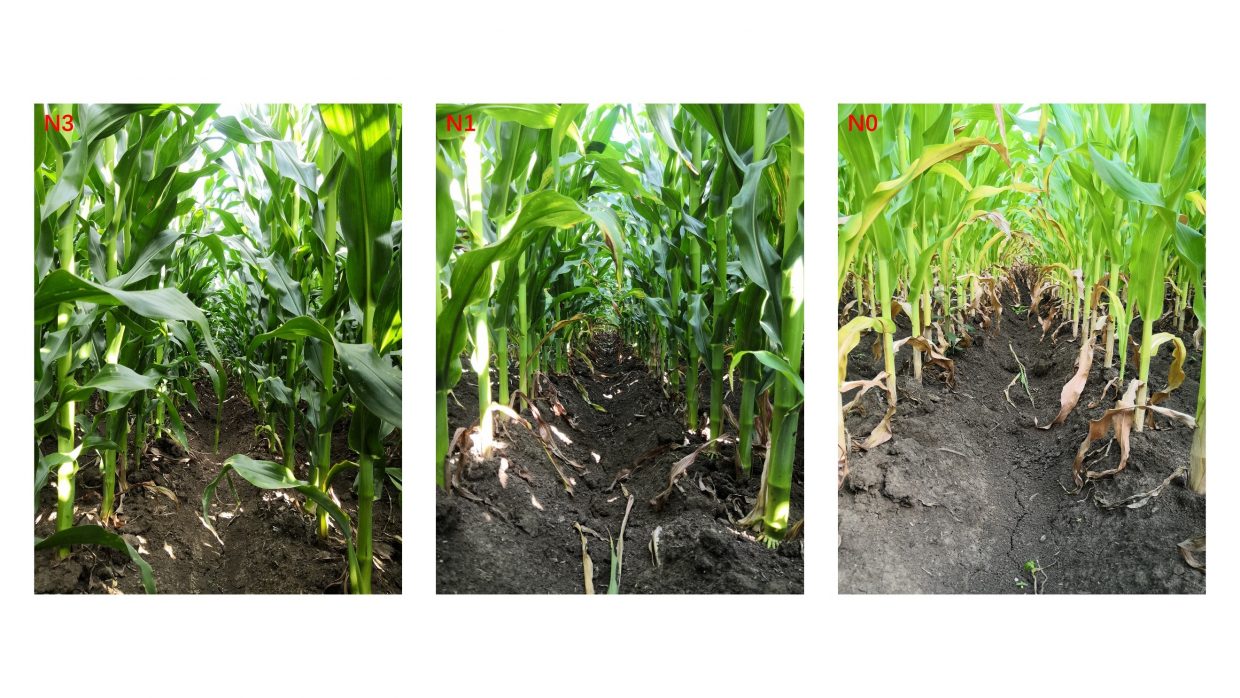Leaf chlorophyll dynamic response to nitrogen at different spatio-temporal scales
The paper “Effects of nitrogen application rate on the spatio-temporal variation of leaf SPAD reading in the maize canopy”, published in The Journal of Agricultural Science, has been chosen as the latest Editorial Highlight and is available open access.
Green leaves serve as the main photosynthetic structures of crop plants, containing the majority of chlorophyll, the functional traits of which directly affect photo-assimilate production and grain yield. Leaf chlorophyll content, a key factor in determining leaf photosynthetic rates, can be used as a proxy for the photosynthetically-active nitrogen pool. Therefore, accurate assessment of leaf chlorophyll content is of great significance in characterizing plant nutritional status and evaluating leaf photosynthetic capacity. Monitoring crop nutritional status in real time makes it possible adapt plant nitrogen uptake based on the target yield by optimizing the timing and amount of nitrogen fertilization, thus enhancing nitrogen fertilizer use efficiency.

Chlorophyll levels and green leaf area are important indicators of leaf photosynthetic activity and are readily measurable functional traits. Leaf chlorophyll content can be rapidly estimated with a Soil-Plant Analysis Development (SPAD) meter. The SPAD-502 chlorophyll meter is a rapid, non-destructive, hand-held spectral device that is widely used for leaf chlorophyll measurement in the laboratory and the field. SPAD readings can be used to quantify leaf nutrient content and reflect leaf functional status. Temporal changes in the vertical profile of canopy leaf functional status can be seen in the spatio-temporal variation in leaf SPAD readings.

In order to accurate retrieval of SPAD readings at different spatio-temporal scales, we selected two maize cultivars that were grown at the Gongzhuling Experimental Station of the Chinese Academy of Agricultural Science (43°53′N, 124°81′E), Gongzhuling County, Jilin province, China. The experiments were conducted in a field that was fertilized with nitrogen over a long-term period, from 2009 to 2019. This study used a chlorophyll meter for non-destructive monitoring of leaf chlorophyll dynamics to characterize the pattern of spatio-temporal variation in the nutritional status of maize leaves under three nitrogen treatments (300, 150, and 0 kg N/ha/yr). We examined the effects of nitrogen application rates on leaf SPAD reading and found that, nitrogen levels could affect the maximum leaf SPAD reading (SPADmax) and the duration of high SPAD reading. A rational model was used to measure the changes in SPAD readings over time in single leaves. This model was suitable for predicting the dynamics of nutrient status for each leaf position under different nitrogen treatments, and model parameter values were position dependent. SPADmax at each leaf decreased with the reduction of nitrogen supply. Leaves at different positions in both cultivars responded differently to higher nitrogen rates. Lower leaves (8th-10th positions) were more sensitive than the other leaves in response to nitrogen. Monitoring the SPAD reading dynamic of lower leaves could accurately characterize and assess the nitrogen supply in plants. The lower leaves in nitrogen-deficient plants had a shorter duration of high SPAD readings compared to nitrogen-sufficient plants. In summary, the spatio-temporal variation of plant nitrogen status in maize was analyzed to determine critical leaf positions for potentially assisting in the identification of appropriate agronomic management practices, such as the adjustment of nitrogen rates in late fertilization.
The Journal of Agricultural Science Editorial Highlights are selected by the Editor-in-Chief and are freely available for one month. View the recent selections here.






